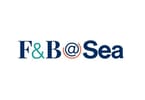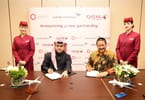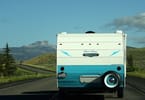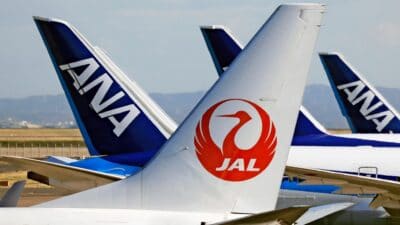Lori Ranson:
It seems like you feel pretty comfortable with your liquidity position for the foreseeable future, maybe after this transaction is completed.
Peter Ingram:
Yeah. Yeah. With this transaction closed, which it is now, we’ve got ample liquidity. I never want to say to handle whatever the world can throw at us because after 2020, I don’t want to be too… I want to be
careful about presupposing that I’ve got a crystal ball for the future, but we think we’ve got the ability now to have the liquidity comfortably to manage through the pandemic as we see it evolving. We’ll really actually pivot now into thinking about, “Okay, now that we’ve taken this debt on, how do we think about where our balance sheet needs to be over the next two, three, four years? And what are some of\ the other long-term decisions we need to make about investments, about paying back debt, which debt to pay back and starting to manage the business going forward?”
Lori Ranson:
I want to turn to test just briefly, because one of your colleagues made an interesting point a few weeks ago in terms of, if you think back a year ago, Hawaiian would have never thought that it would bein the testing business. Now you’ve built up this testing network that’s pretty exclusive. I think about seven providers in five locations. Is that right? Is that the correct number right now?
Peter Ingram:
Yeah, I think it is difficult with the current testing resources that are available now to think about how you would scale that up on a national scale for all the testing that’s going on. Certainly, because we have
the majority of the people on our airplanes traveling at least one way on the flight getting tested already. I think we are in, somewhat of, a better position to fathom it because it’s already going on. As I think about how we got to where we are on testing, it really was about recognizing that testing was going to be integral to getting Hawaii open for travel again. That became clear to us as we went through May and June, July last year. One of the things we said is, “Okay, well, testing capacity is still difficult. It
wasn’t… You weren’t able to just go out and get a test wherever you wanted it in the country.”
So we said, “How do we make sure that access to tests isn’t an impediment for the people who are traveling for us?” That’s what led us to some of the partnerships and led us to set up the dedicated labs with Worksite Labs. It’s also served the purpose of adding supply into the market that helps the free
market try and drive the costs down. I don’t think we want to be in the testing business long-term, but we want to make sure that there’s a little bit of an impetus for the market to create solutions so that testing can be available when people need it.
Lori Ranson:
Has that happened? That pricing pressure, has it materialized yet? Haspricing come down?
Peter Ingram:
Yeah, I think we’ve seen it in some places. Our Worksite Labs tests at a $90 price point is still the lowest cost on subsidized tests of any of Hawaii’s partners. But we’ve seen some of the other providers go from
$150 to $130 to $120 and testing become more available. In the major markets that we serve, access is not a problem that it was back in August or September. I think there still is a challenge for Hawaii and
the people who are coming from some of the smaller markets in the country, there really isn’t a big enough network of testing labs affiliated with the state of Hawaii’s programs. You can have access issues in those locations.
Lori Ranson:
Are you seeing any progress made in clearing up some of the patchwork of regulations in the inner island market in terms of quarantines or testing or both? Do you see that improving possibly as vaccination becomes more widespread? Do you think that’s what’s going to move the needle within
those markets?
Peter Ingram:
It’s still a little bit less consistent than we would like, and there’s actually a bill that has been proposed in the state legislature to try and normalize around one consistent standard for all of the counties in the
state again. So have a one of Hawaii rules structure, which is where we started out and for a variety of reasons that deviated based on some of the concerns that were unique county by county. For us, getting
that consistency is very helpful. It makes it easier for us to explain to prospective travelers and to our guests, “Here’s what the rules are and here’s what you should expect.
If you do this, you will be able to manage through all the protocols as opposed to having… If you’re going to Maui here is one rule, and if you’re going to Kauai, here’s another rule.” So we think that would
be better. Some of this can be helped with technology over time. If tools like CommonPass become more available and accepted, then people can go to a centralized clearinghouse for [inaudible 00:11:03] of the standards. So not every guest has to learn it, you just know, “I’m going to go to the centralized
provider and their job is to manage the rules of different jurisdictions.”
Lori Ranson:
Right. Do you see just on a broader scale, a larger international scale that standardization happening within the next few months or is that something that’s just farther out?
Peter Ingram:
My guess is that it’s probably a little further out in that we haven’t really seen that happen yet. I think we’ve got to see some momentum in that direction before we can be confident that it’s only a couple of
months away. Going back to your point on vaccines, I think different jurisdictions, particularly internationally may have rules about vaccination. So this may be something we’re managing not just for
2021, but going beyond that as we’re validating not just testing status, but vaccine status.
Lori Ranson:
Right. I want to touch on new markets very quickly because you all made some interesting moves in the domestic market service to Austin and Orlando and Ontario, and then Long Beach to Maui. Can you just
give us a picture of how those markets are performing? I know it’s the early stages yet, but maybe just give us some insight into how you market to a brand new destination in a pandemic.
Peter Ingram:
Yeah, sure. Yeah. It is early stages. So early in fact, we haven’t actually started those new routes yet.
They all start during March and April. I could look at them in two separate categories. One group is Ontario to Honolulu, Ontario, California, to Honolulu, and Long Beach to Maui. Those are medium-haul
West Coast roads in the core of our Western geography where we’re a very well-known brand. We have a lot of people. We fly Long Beach to Honolulu already. So we can do some of the marketing and promotion and awareness for those new routes using our own database of guests and people here in
Hawaii who travel to those locations. So that’s a little bit of standard how we’re doing… How do we market West Coast flights normally? In terms of Austin and Orlando, these are our areas where we don’t have a flying presence at all. This is our first flight to Texas or Florida. In the case of Orlando, we’ve got some of the traffic bases for that market is a Hawaii origination.
Certainly, we know that group of guests and we can work on awareness there, but it really does require us for… Whether it’s Orlando origination or even Tampa, because that’s a fairly short drive. Then the
case of Austin and San Antonio, we’ve got to go and do some awareness campaigning and make sure people know that we’re there. The airports have been very helpful and supportive of this. They always love to be able to add service to a new destination, particularly when that destination is Honolulu. They were excited to help us. But it’s going to be a difficult bit of work in a time when, as you say, people are not necessarily all thinking about traveling right now. We’ve been locked down for a while. The flip side
of that is there is a lot of pent up demand. So when people become aware of it, they get really excited very quickly about the new routes, and we think that’s going to manifest itself in good demand for each one of these new routes.
WHAT TO TAKE AWAY FROM THIS ARTICLE:
- I never want to say to handle whatever the world can throw at us because after 2020, I don’t want to be too… I want to becareful about presupposing that I’ve got a crystal ball for the future, but we think we’ve got the ability now to have the liquidity comfortably to manage through the pandemic as we see it evolving.
- I don’t think we want to be in the testing business long-term, but we want to make sure that there’s a little bit of an impetus for the market to create solutions so that testing can be available when people need it.
- I think there still is a challenge for Hawaii andthe people who are coming from some of the smaller markets in the country, there really isn’t a big enough network of testing labs affiliated with the state of Hawaii’s programs.





















